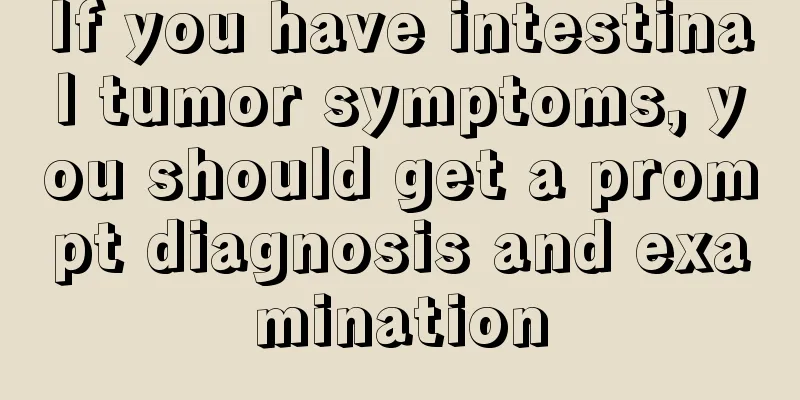Bacterial meningitis needs to be treated like this

|
Bacterial meningitis is an extremely harmful disease, especially for children, as it can easily cause various sequelae if not treated in time. From the perspective of clinical effects, general treatment, antibacterial drug treatment, cerebral hyponatremia treatment, subdural effusion treatment, and increased intracranial pressure treatment have good therapeutic effects. 1. General treatment Lie quietly in bed, pay attention to disinfection and isolation, keep the airway open, give oxygen, and suction sputum. For anticonvulsants, diazepam 0.1-0.2 mg/kg can be used intravenously (up to 10 mg each time); phenobarbital sodium 5-7 mg/kg can be injected intramuscularly and intravenously, half of each dose; phenytoin sodium 6 mg/kg can be injected intravenously, which can be repeated if necessary and changed to oral administration as soon as possible; paracetamol 0.3 ml/kg can be administered by enema. 2. Antimicrobial therapy (1) Influenza B: Use ampicillin 400 mg/(kg.d), divided into 6 intravenous doses. Stop the drug 5 days after the fever subsides. The course of treatment is 10 to 14 days. Or stop the drug when the lymphocytes in the cerebrospinal fluid are <50×106/L and the protein is <500 mg/L after a full course of treatment. Chloramphenicol 50-100 mg/(kg.d), divided into 2 intravenous injections, the course of treatment is 7 days. (2) Pneumococcus: Penicillin 800,000-1,000,000 U/(kg.d) by intravenous drip, ampicillin 150-400 mg/(kg.d) or erythromycin 50-60 mg/(kg?d) by intravenous drip in divided doses. If the patient is allergic to penicillin, cephalosporin 80 mg/kg may be used instead, divided into 4 doses for intravenous injection, plus intrathecal injection of 5-25 mg/d. (3) Staphylococcus: ceftriaxone. Penicillin is used for sensitive strains, and ceftriaxone is injected intrathecally. (4) Pathogen is unknown: Ampicillin. If the patient is allergic to penicillin, chloramphenicol can be used instead. 3. Treatment of cerebral hyponatremia If serum sodium is <120mmol/L and there are symptoms of hyponatremia, 12ml/kg of 3% sodium chloride can be dripped intravenously within 2 to 3 hours. This amount can increase serum sodium by about 10mmol/L and can be repeated after a few hours if necessary. 4. Treatment of subdural effusion If early cranial bone transillumination or CT examination reveals fluid accumulation but no symptoms of increased intracranial pressure, puncture treatment is not necessary. If there is a lot of fluid accumulation and symptoms of increased intracranial pressure, puncture can be performed. Puncture should be performed daily at first, and no more than 30 ml of fluid should be extracted each time. Then puncture should be performed every other day until the fluid accumulation is drained. It will usually be cured within 2 weeks. If the symptoms do not improve after 3 to 4 weeks, or the amount of fluid is too much and puncture and fluid extraction cannot relieve the symptoms of intracranial hypertension, drainage can be continued. If it is still ineffective, surgical removal of the capsule can be considered. 5. Management of increased intracranial pressure 20% mannitol or 25% sorbitol 1-2g/kg, quickly administered intravenously within 20-30 minutes, supplemented with 50% glucose solution 1/8-12 hours, can be used 2-3 times, and the course of treatment is generally 2 days. Or use 30% urea solution (diluted with 10% sorbitol). Maintenance therapy can be achieved with glycerol 1-2 g/kg, 1/4-6 hours, orally or by nasogastric feeding. 6. Prevent spinal canal obstruction For patients with thick cerebrospinal fluid or late treatment, intravenous drip of hydrocortisone or dexamethasone, or intrathecal injection of dexamethasone 1-2 mg can improve the efficacy. |
<<: Can sulfur water be used for bathing?
>>: What disease will you get if you eat meat with pork worms?
Recommend
What are the common symptoms of early liver cancer? Teach you to know the three major symptoms of early liver cancer
Regarding the early symptoms of liver cancer, exp...
What should I do if I have bad breath after having porcelain teeth?
Some people develop bad breath after having porce...
Do you know how scraping can enlarge breasts?
Scraping is a common way of maintaining health in...
Who is not suitable for beauty lens thread
Nowadays, it is not difficult for women to become...
What are the side effects of tampons
Tampons are now slowly being used by some female ...
How to distinguish male and female black mollies
Speaking of the black mollies, I believe this is ...
Tips to teach you 6 cleaning techniques to do housework beautifully~
6 cleaning tips, often with a little thought, can...
What are the characteristics of hematuria in bladder cancer?
Bladder cancer hematuria is visible to the naked ...
Treatment methods for acetic acid white epithelium
Many people have symptoms of acetic white epithel...
The efficacy and function of Begonia papaya
In our lives, many people like to eat crabapples....
Can I pull out a very loose tooth?
Loose teeth have a huge impact on people's or...
How to remove the fishy smell from pork kidneys?
Pork kidneys are the kidneys of pigs. Many people...
What to do if the corrugator muscle is bulging
The corrugator supercilii is a relatively small m...
Which diseases are easily confused with lymphoma
Clinically, malignant lymphoma is often misdiagno...
What is food grade pp material
PP material is a very common plastic. It can be u...









